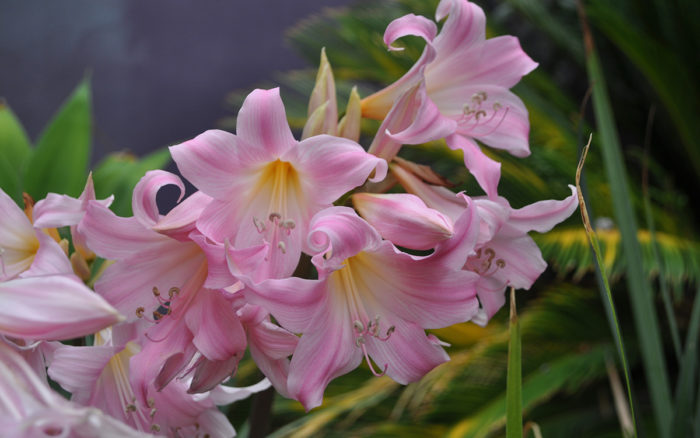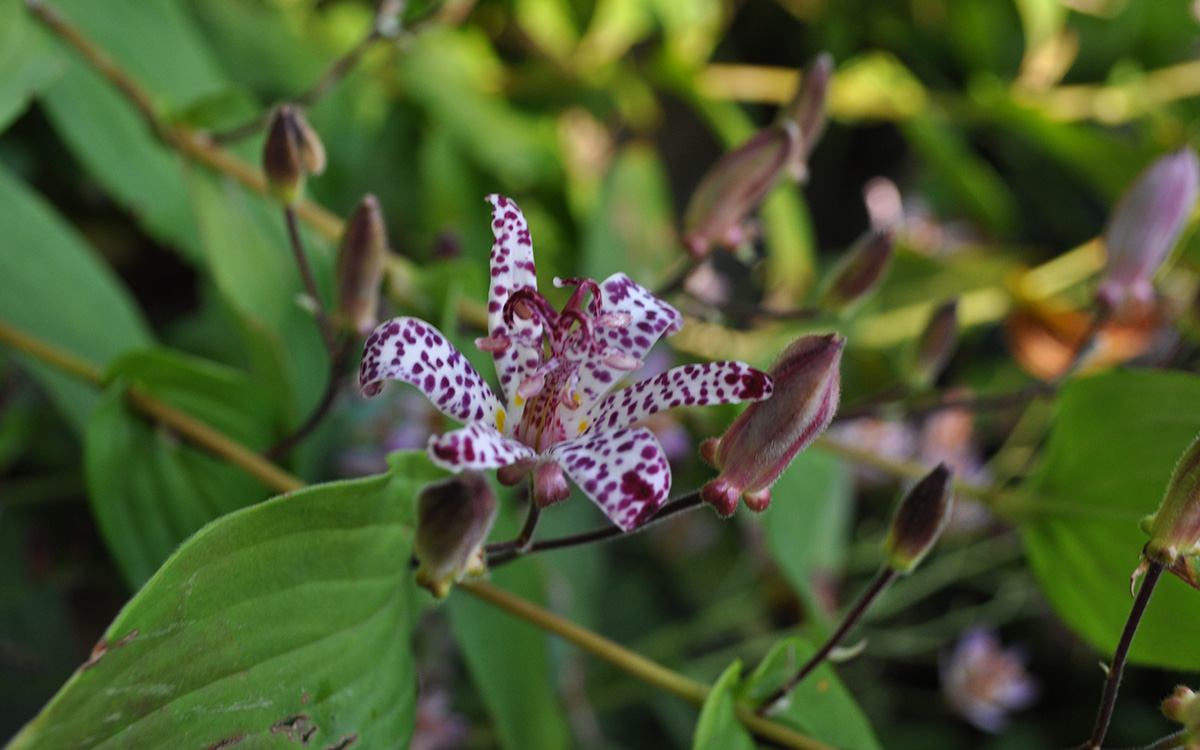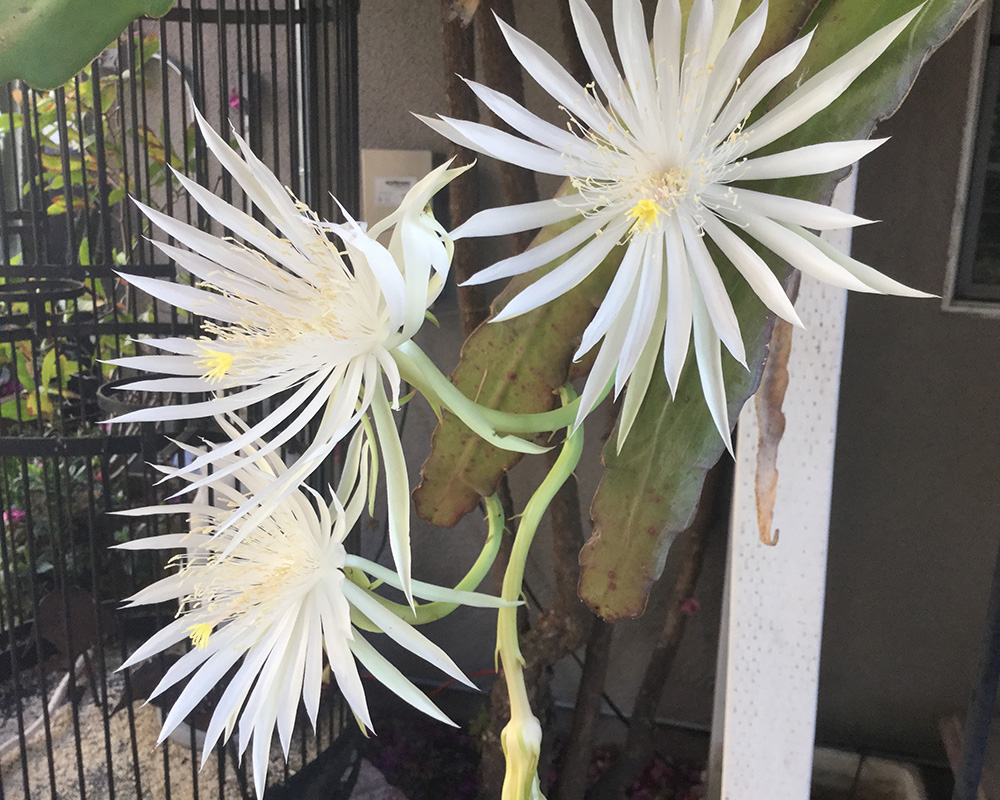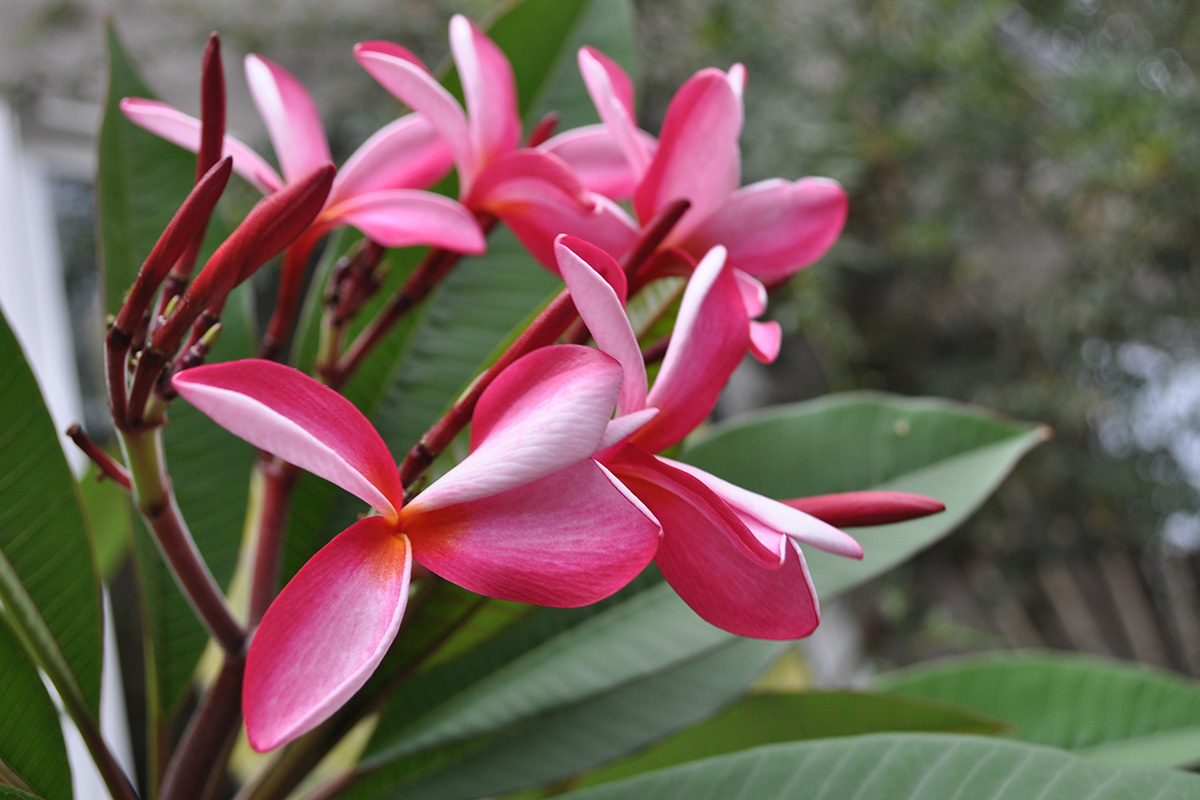
In the heat of August, while a lot of plants are past their seasonal prime, there are some that are just getting their groove on. This is one of the things that makes gardening so gratifying; right around the corner something exciting is always about to happen. Here are some of the best plants that are full of life in the heat of summer.
Belladonna lily
Amaryllis belladonna, Zones 7–10
I think for most of us, bulbs provide some of the greatest surprises in the garden. This is probably because of their long periods of absence hiding underground; their emergence triggers a response of, “Oh! There you are!” Native to South Africa, belladonna lily, also known as naked ladies, is quite easy to grow in our climate. It is not particular about soil or moisture conditions and will show up looking gorgeous and unaffected in the heat of August after a lot of other plants are past their seasonal prime. It is quite common to see it flowering all up and down the California coast, both inside and outside of gardens. It shows up sans leaves, hence the “naked” appellation. If you have a large clump of them, right after flowering is a good time to split them up.

‘Blue Wonder’ toad lily
Tricyrtis hirta ‘Blue Wonder’, Zones 5–9
Another so-called lily that loves to surprise us in August is toad lily. Native to shaded rocky cliffs and stream banks in Japan, this little gem thrives in shady spots in our California gardens. It is not always so easy to get color from flowers in a shade garden, so ‘Blue Wonder’ is a treat. You can plant it in either spring or fall. Although all reports say it is best grown in Zones 5–9, I have it growing happily in my Zone 10 garden, so I would encourage you to try it if you are looking to add some shine to a shady spot.

Hooker’s orchid cactus
Epiphyllum hookeri, Zones 9b–11
I have various kinds of Epiphyllum in my garden. Some bloom in the spring. Some bloom for just one night, while others last a few days. Some are brilliantly colored. While this particular one blooms repeatedly with a succession of flowers during summer nights, each individual flower only lasts one night and withers and dies with the morning light. These beautifully creamy-and-white blooms are a reason to get outside in the garden as early as you can. This cactus may bloom inconveniently for us, but the schedule is quite convenient for its pollinators, which are nocturnal creatures—moths and bats. The stems of the cactus can get as long as 6 feet. Usually they arch downward, but I’ve had stems that grew straight up, through a canopy of bougainvillea (Bougainvillea cv., Zones 9–11), and popped out on the other side!

Red frangipani
Plumeria rubra, Zones 10–12
Frangipani are native to Mexico, the Caribbean, and South America. Despite that, I always associate them with Hawaii because they are one of the most popular flowers for making leis. I have two red frangiani trees in my garden, and both of them were grown from cuttings, which was pretty simple to do. Frangipani can tolerate any soil type but prefer well-drained soil. They prefer full sun and should be facing south. In the tropics, they can grow to 20 feet tall, but the largest one I have seen in LA was 12 feet tall. Most people put them in containers, where they are kept much smaller. Frangipani is generally a low water-use plant, but it does like some extra water in summertime—less in winter. Once it starts blooming here, it will continue clear into December. The scent is lovely, especially in the evening when it seeks to attract its pollinators.

‘Ruby Slippers’ echeveria
Echeveria harmsii ‘Ruby Slippers’, Zones 9b–11
This is probably my favorite small succulent. In certain lights, the fuzzy, strikingly colored leaves take on a glow that is mesmerizing. ‘Ruby Slippers’ echeveria can grow to 12 inches tall and wide and, like other succulents, is easily propagated. However, I find it to be rather slow growing, so I am a bit stingy in parting with any cuttings. This echeveria’s flowers are bright orange. Normally I favor blues and purples in my garden, but this plant is definitely one I make an exception for.
—Francesca Corra, APLD, is a nationally certified landscape designer and owner of Dirt Diva Designs in Studio City, California.
Fine Gardening Recommended Products

Gilmour 5/8" x 25' Round Weeper Soaker Hose
Fine Gardening receives a commission for items purchased through links on this site, including Amazon Associates and other affiliate advertising programs.

Lee Valley Garden Obelisks
Fine Gardening receives a commission for items purchased through links on this site, including Amazon Associates and other affiliate advertising programs.

Gilmour 811673-1001 Sprinkler
Fine Gardening receives a commission for items purchased through links on this site, including Amazon Associates and other affiliate advertising programs.
- Adjustable collar for partial- to full-circle coverage
- Dial precisely sets spray distance
- On/off switch eliminates trips from sprinkler to spigot



















Comments
Log in or create an account to post a comment.
Sign up Log in